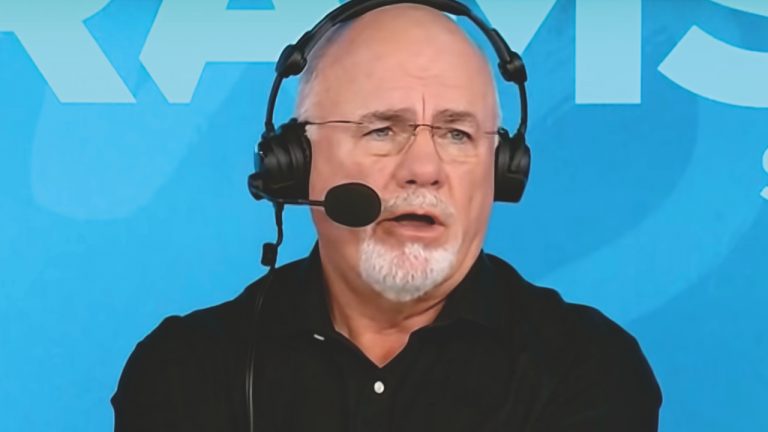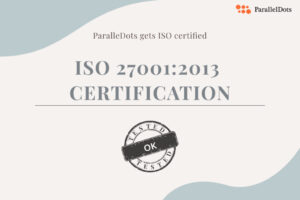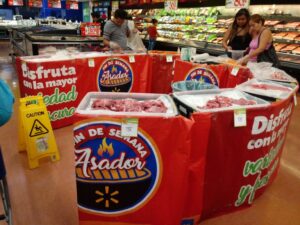Imagine you are going to the supermarket for your weekly restocking of supplies. You have a shopping list in mind and pretty much decided on what products you are going to buy. You find everything you want, except that there is no on-shelf availability of your favourite shampoo brand. Bummer right? Either you will now experiment with a different shampoo brand or try to get the same product from another store.
Or imagine another case. You have seen a YouTube ad about a new vegan option being launched for your favourite milkshake flavour. You go to the convenience store looking to try the new product only to find its not there on the shelves. Bummer again!
These are examples of how customer experience gets impacted due to the low on-shelf-availability (OSA) of products. They say stockouts lead to walkouts. For the entire retail industry, it is estimated that stockouts lead to around $1 trillion worth of loss of sales. In this blog we are going to discuss – what is on-shelf availability, how it is measured, and how to ensure high on-shelf availability and gain market share.
What is On-Shelf Availability (OSA)?
Every brand has a must-have SKU in its repertoire. They need to be present on the shelf, at the place allotted to them. Take the example of Red Bull’s hero SKU – the Red Bull Energy Drink , 250 ml can. This SKU has the distinction of selling over 7.5 billion cans in a year. Which is why, Red Bull cannot afford to have a situation where its hero SKU is not present in the store at the place where it is expected to be. If this were to happen, everyone ranging from the CPG company, to the retailer and the customer – will be unhappy.

On these lines, every brand has a list of “must-have” SKUs. This list can be broad or narrow, and it varies from channel to channel. For example – in a hyperstore, the must-have SKU list can be expanded to include different variants and sizes of the same product. But in a small convenience store where shelf space is limited, the list will be narrower. In cash and carry outlets, bulk packs will be categorized as “must-haves”. And at luxury stores, brands have to ensure the shelf-availability of their high-end products.

On-Shelf Availability (OSA) refers to what percent of ‘must-have’ SKUs are actually present on the shelves. Say a shampoo company wants an assortment of 10 of its high-selling SKUs to be present in a retail store, but on the shelf only 6 are present. This means that OSA for that product assortment is 60%
People often ask, how is on-shelf-availability (OSA) different from out-of-stock (OOS)? Mathematically, its just the opposite of OSA. If 6 out of 10 SKUs in the planned assortment are present in the outlet, OSA will be 60% but OOS rate will be 40%. There is another caveat. OSA is for what is available on the shelf. Whereas OOS means the product is not available on the shelf as well as back-room stock of the store. But generally, these are just slightly different ways of saying the same thing.
Why is OSA important?
High OSA helps with customer loyalty and eventually translates to higher market share.
Take the case of new product launches. CPG brands perform a lot of due diligence when it comes to releasing a new product – and it is for naught if that product is not available on shelf for the customer to purchase. Non-availability will automatically lead to reduced acceptance of the product in the market leading to its failure. Therefore, maintaining high OSA levels for new products is crucial to help ensure their success.
High OSA helps brands serve a larger base of customers. Many brands in a category launch different variants of their products to cater to customers with different preferences and needs. For example, let’s suppose Coca Cola launches a diet version for its 2 litre bottle. This SKU will pick-up and become successful only if this 2 litre diet variant is consistently available across different outlets. High on-shelf availability will ensure that Coca Cola emerges as a leader in the ‘health conscious beverage lovers’ segment of the market and eventually gain market share over the competition. Many companies end up having a high assortment of SKUs with poor performance due to unreliable and low on-shelf availability.

Moreover, CPG brands that provide a steady product availability, are perceived favourably by their retail partners. Retailers would want to maintain a good relationship with CPG manufacturers that offer them a wide variety of high-selling SKUs and ensure that their OSA levels are high. It leads to a mutually beneficial partnership.
In all the above mentioned scenarios, if brands take measures to maintain high OSA levels, eventually they gain market share. Same is true for retailers.
What are the challenges faced by CPG brands in ensuring On-Shelf Availability?
When it comes to achieving high OSA levels, we observed that many brands failed to meet their targets on the ground level due to a variety of reasons.
Keeping tabs on many SKUs for OSA compliance is quite a task. Imagine yourself as a merchandiser for a company like P&G in a hypermarket store. Now P&G is present in more than 10 categories and has around 20+ must stock products in each category. Even with the best of intentions and effort, ensuring that all those 200 products have consistently high OSA is taxing.
Not only this, the list of must-have SKUs is not the same for every store – it changes depending upon the geography, the channel of distribution and the terms of trade with specific retail partners.
Moreover, the “must-have” SKU list has to be updated keeping in line with new launches and changes in strategic plans. This list has to be timely communicated by the brands to their sales reps, merchandisers and retail partners – which is again – not easy to achieve at scale.
There is also the issue of how brands measure their on-ground OSA levels for every store over time. The traditional methods of measuring OSA have their own challenges. Self-reporting by field reps (by answering a questionnaire on SFA or other app) is time consuming, prone to error and very prone to manipulation (not many people voluntarily report that they have failed in achieving high OSA). The other measurement method is third party audits. But it’s expensive, can be done only on a sample and is prone to error when done manually. A fast, low-cost and scalable method is needed to measure OSA for all stores.
Also, the CPG leadership has to deal with the lack of instant insights – by the time their sales reps report their OSA findings to the CPG HQ, ground realities in that particular store may change. Thus, any redressal mechanism for OSA needs to be able to give real-time insights to both the sales rep and the CPG leadership for instant grievance redressal, if the brand is to achieve its desired OSA target.
How Image Recognition helps –
Image recognition instantly highlights the missing SKUs on the shelf – thereby becoming almost like an assistant to the field rep. OSA scores for that SKU are immediately computed, and the sales rep is able to rectify the issue, thus improving retail execution.

What image recognition solutions do is create a robust redressal mechanism in the form of a virtuous feedback loop. It gives real-time OSA insights to both the sales rep and the CPG leadership. The sales rep is able to solve the issue immediately in the store, and simultaneously the AI also relays the issue to the CPG HQ. The brand leadership has a dashboard which has access to the OSA calculated, and they communicate with both the sales rep and the retailer to improve their OSA numbers.

Image recognition solutions like ShelfWatch can also be customized to create a scorecard. All the brand has to do is set OSA targets for its sales reps and retail partners. Depending on the targets achieved by them, a scorecard is created. This makes it easy to discern the underperforming field reps. It also pinpoints which retailers are not carrying the stock as decided by the OSA terms of trade with the brand. The scorecard is also used to identify where the targets have been achieved, and using it as a base, incentives/bonuses can be determined.
Image recognition thus helps in creating a KPI driven organization, where performance is valued, and adequately rewarded through incentives.
Things to keep in mind for an effective OSA measurement programme –
Having worked with many CPG brands and retailers in achieving their perfect store execution, we highlight certain practices that can help you build an effective OSA measurement programme.
Brands should track eye-level OSA as a KPI for their hero SKUs. This can be a lever used to drive behaviour change and get users to try new products or upgrade to premium ones so as to improve ARPU. Moreover, new launches should be included under a separate KPI called New Launch OSA – and they can be aggressively tracked to ensure product success.
A list of must-have SKUs should be curated separately depending on – channel of distribution, retailer, region, product category and more. ShelfWatch can be easily customized to communicate with the retailers/merchandisers and field reps, the list of must-have SKUs for each channel. It can also calculate the OSA score accordingly.
One thing to note is that the list of must-have SKUs considered for OSA measurement is not too broad or too narrow. The sweet spot lies in keeping the list ambitious, but realistically achievable. Also, reviewing your OSA lists at least once every quarter is a good practice.
We have seen that some of the best brands track OSA well, and then give out incentives to retailers on hitting 85%-90% OSA targets. On an average CPG companies have OSA score in the 40% (yes you read it right, 40%) to 85% range.
OSA is a very important lever which should be used by CPG companies to set themselves apart in a competitive market and gain market share. Image Recognition helps achieve high OSA much more reliably than other alternatives like third party audits and self reporting by field reps.
Liked the blog? Check out our other blogs to see how image recognition technology can help brands improve their execution strategies in retail.
Want to see how your own brand is performing on the shelves? Click here to schedule a demo for ShelfWatch.
- "
- &
- 7
- access
- Ad
- AI
- All
- app
- around
- Assistant
- availability
- BEST
- BEVERAGE
- Billion
- Blog
- brands
- build
- buy
- carrying
- Cash
- change
- Coffee
- Companies
- company
- competition
- compliance
- cpg
- Creating
- customer experience
- Customer Loyalty
- Customers
- dashboard
- deal
- Diet
- Drink
- driven
- Effective
- energy
- Environment
- execution
- experiment
- Failure
- FAST
- form
- good
- guide
- High
- Highlight
- How
- How To
- HTTPS
- identify
- image
- Image Recognition
- industry
- insights
- IT
- keeping
- launch
- launches
- lead
- Leadership
- leading
- Level
- Limited
- Line
- List
- Lists
- Loyalty
- Manipulation
- Market
- measure
- ML
- new product
- new products
- numbers
- offer
- Option
- Other
- Partnership
- People
- performance
- poor
- Posts
- Premium
- present
- Product
- Products
- purchase
- range
- real-time
- realities
- reasons
- report
- retail
- Retail execution
- retail industry
- retailer
- retailers
- sales
- Scale
- set
- Share
- ShelfWatch
- Shopping
- small
- So
- Solutions
- SOLVE
- Space
- Spot
- stock
- store
- stores
- Strategic
- Strategy
- success
- successful
- sweet
- Target
- Technology
- time
- track
- trade
- users
- valued
- weekly
- What is
- works
- worth
- year
- youtube






